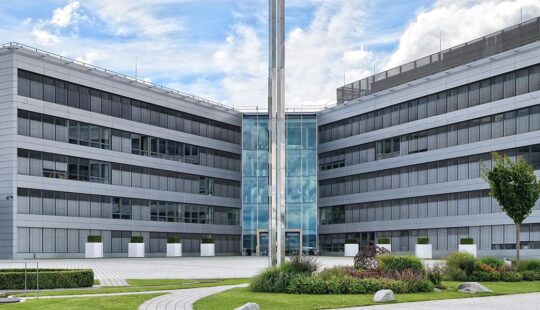There can be no doubt that we are living in exceptionally turbulent times.
The dire, existential urgency of the COVID-19 pandemic has cast a long shadow over our once open and seemingly prosperous society. We have had to close borders and shut down businesses, schools, and social centers – separating people physically, economically, and socially.
Within a matter of days, predictable customer demand evaporated, global supply chains designed for up-to-the-minute efficiencies floundered, remote work became the new model for employment (for those fortunate enough to still be employed), and a vast ecosystem of once-thriving large and small businesses struggled to stay viable or simply maintain continuity.
While the world was transfixed on the pandemic and its aftereffects, long-standing inequities in our societies were inflamed by recent events in the U.S., culminating in global public demonstrations against systemic racial injustice and hate, and opening the door for deeper and much-needed action on diversity and inclusion.
Separately, the climate crisis has drawn the attention of global policy makers and business leaders in light of new evidence that we are not doing nearly enough to rescue our planet. In May, scientists recorded the largest concentration of carbon dioxide in the atmosphere over the last 3 million years, despite reduced emissions from travel and commerce during COVID-19 lockdowns.
Meanwhile, as the world’s population continues to grow at a blistering pace and digitalization, automation, and artificial intelligence (AI) disrupt major industries, over half of employers say they still cannot find the talent they are looking for – almost double that from just a decade ago.
At first glance, the historic events of 2020 may seem random and disparate, or an unfortunate confluence of circumstances beyond our control. But if you subscribe to the theory of the Butterfly Effect and look more closely, you might begin to see some of the ways that the sources of the climate crisis, inequality, and health are interconnected.
The Circular Economy and Climate Change
COVID-19 exposed the lack of resiliency in our supply chains. More than 100 billion tons of raw materials enter the system each year and add to the fragility and enormous waste generated through overconsumption. We require sustainable, holistic solutions to fix these system-wide issues.
The circular economy addresses many of these imbalances by incorporating the reusability of products flowing through the supply chain to reduce problems of waste and pollution. This revolutionary approach to integrating sustainability from the beginning of product development has an indirect impact on public health, education, and the spread of disease within communities built around participating nodes of the chain.
Implementing these sustainable solutions has the potential to unlock $4.5 trillion in economic growth while promoting water and nutrient security, reducing carbon emissions by 45 percent, and reducing waste by 90 percent – all of which ultimately help address this century’s biggest global threat to health: climate change.
Innovators Rise in Times of Crisis
The United Nations (UN) recently announced a Decade of Action toward achieving the 17 Sustainable Development Goals (SDGs), igniting an accelerated push to find solutions to the world’s biggest challenges by 2030. While some skeptics might argue that economic progress has papered over many of these deep fault lines, SAP understands that these challenges demand urgent action. In order to help rescue the planet and create a more peaceful, inclusive society, leading with purpose has never been more important and necessary than it is today.
However, because these problems are complex, interconnected, and transnational, no single entity can solve these problems alone. It takes a network of engaged communities coming together to co-innovate sustainable solutions to these social, economic, and environmental challenges. This is where SAP can help.
SAP is committed to its purpose to help the world run better and improve people’s lives. As a company, we are uniquely positioned to lead in co-innovating new technology solutions to these global issues with our 450,000 customers, partners, social enterprises, governments, entrepreneurs, and thought leaders within the SAP Purpose Network program. With 77 percent of financial transactions touching an SAP system, we represent the heartbeat of business.
In addition to our own response to COVID-19, we are proud to share the stories of many of the customers and partners within the SAP Purpose Network, who have led in responding urgently to the greatest needs of our time – whether helping procure ventilators, fostering remote employee well-being, sourcing hospital beds, pivoting production lines, or supporting local communities. Through it all, they have shown that the core of what SAP delivers – running the world’s most critical business processes to help build an intelligent enterprise – has never been more essential.
SAPPHIRE NOW Converge: Purpose and Sustainability
During SAPPHIRE NOW Converge, premiere broadcasts on Purpose and Sustainability will start June 15, as experts are profiled on their views about these global challenges.
Cristianne Close, the global market practice leader at the World Wildlife Fund (WWF) will focus on sustainable development and market access strategies with leading global businesses to develop inclusive value chains that support sustainable supply and demand. In a special SAP broadcast, she will shine a light on the intersection of business, technology, and sustainability to explore new ways businesses can respond to climate change, sustainable land use, and the COVID-19 crisis. This topic is too big for any one company to take on alone, she says. Find out how you can be part of the solution during this premiere. Watch the session here.
A second digital broadcast will explore the untapped potential of the circular economy. Today only 8.6 percent of materials are cycled back into the economy, a percentage that is actually decreasing each year. Experts Susanne Stormer, chief sustainability advisor and vice president at Novo Nordisk, and Daniel Schmid, chief sustainability officer at SAP, will discuss how businesses can take a holistic approach to balancing the environment, society, and economic sustainability to create business value for both people and the planet. Watch the broadcast here.
Stay informed on how these mission-critical topics impact business and society on the new SAP Purpose Network Live platform. Join this global community of purpose-driven leaders and social changemakers to engage in a collaborative movement aimed at the challenges and opportunities that create positive economic, environmental, and social impact. Curated on-demand sessions provide inspiring examples of how organizations innovate with purpose to improve people’s lives by using SAP software and services.
Access the Purpose and Sustainability channel for SAPPHIRE NOW Converge.
Vivek Bapat is senior vice president and head of Purpose and Brand Experience at SAP.


